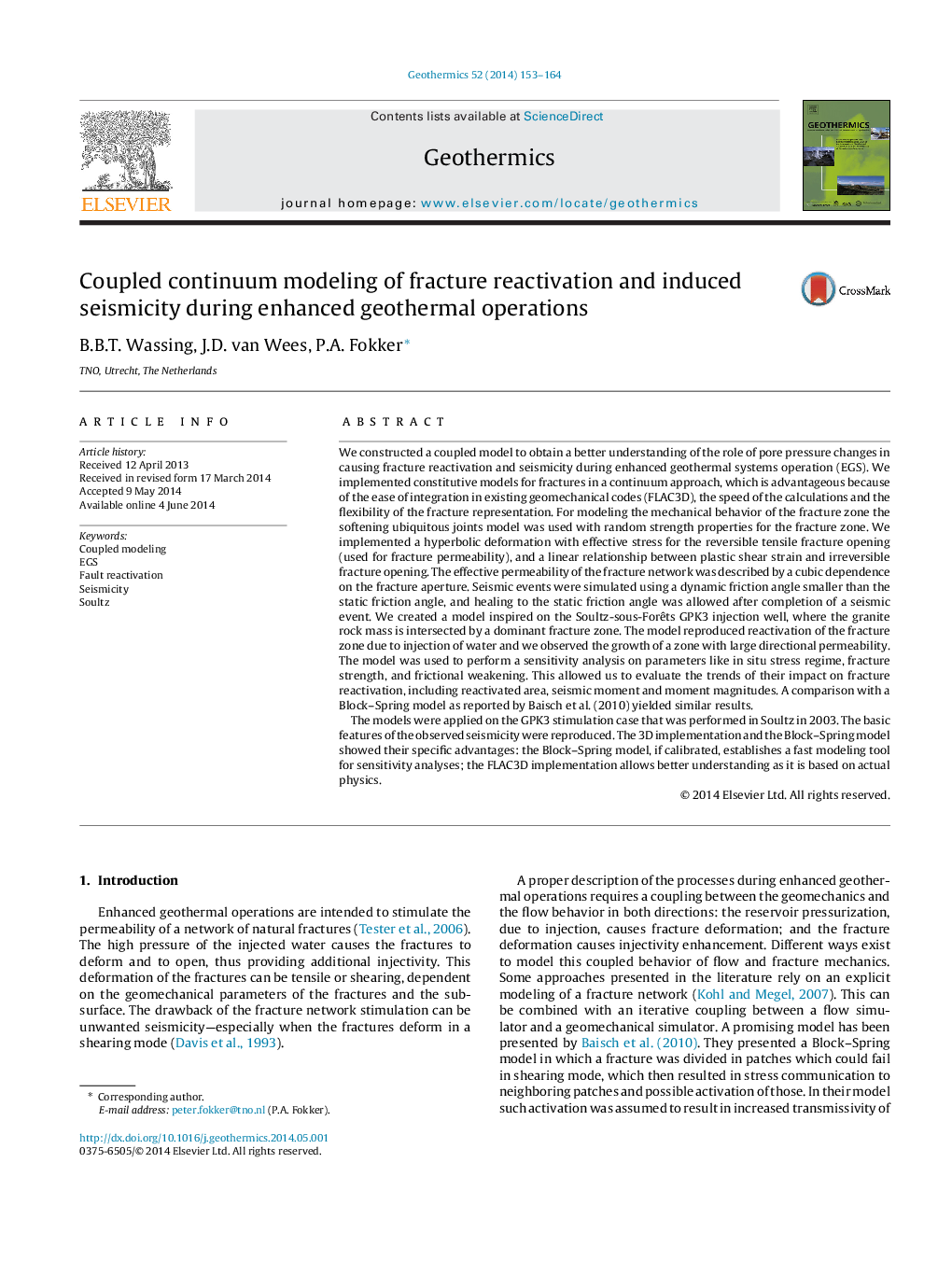| کد مقاله | کد نشریه | سال انتشار | مقاله انگلیسی | نسخه تمام متن |
|---|---|---|---|---|
| 1742338 | 1521916 | 2014 | 12 صفحه PDF | دانلود رایگان |
• A coupled model in FLAC3D simulates fault reactivation and seismicity in EGS.
• Seismic events were simulated using static and dynamic friction angles and healing.
• Our model represents the physics better than published Block–Spring models.
• Application to the GPK3 stimulation case in Soultz yielded good correspondence.
We constructed a coupled model to obtain a better understanding of the role of pore pressure changes in causing fracture reactivation and seismicity during enhanced geothermal systems operation (EGS). We implemented constitutive models for fractures in a continuum approach, which is advantageous because of the ease of integration in existing geomechanical codes (FLAC3D), the speed of the calculations and the flexibility of the fracture representation. For modeling the mechanical behavior of the fracture zone the softening ubiquitous joints model was used with random strength properties for the fracture zone. We implemented a hyperbolic deformation with effective stress for the reversible tensile fracture opening (used for fracture permeability), and a linear relationship between plastic shear strain and irreversible fracture opening. The effective permeability of the fracture network was described by a cubic dependence on the fracture aperture. Seismic events were simulated using a dynamic friction angle smaller than the static friction angle, and healing to the static friction angle was allowed after completion of a seismic event. We created a model inspired on the Soultz-sous-Forêts GPK3 injection well, where the granite rock mass is intersected by a dominant fracture zone. The model reproduced reactivation of the fracture zone due to injection of water and we observed the growth of a zone with large directional permeability. The model was used to perform a sensitivity analysis on parameters like in situ stress regime, fracture strength, and frictional weakening. This allowed us to evaluate the trends of their impact on fracture reactivation, including reactivated area, seismic moment and moment magnitudes. A comparison with a Block–Spring model as reported by Baisch et al. (2010) yielded similar results.The models were applied on the GPK3 stimulation case that was performed in Soultz in 2003. The basic features of the observed seismicity were reproduced. The 3D implementation and the Block–Spring model showed their specific advantages: the Block–Spring model, if calibrated, establishes a fast modeling tool for sensitivity analyses; the FLAC3D implementation allows better understanding as it is based on actual physics.
Journal: Geothermics - Volume 52, October 2014, Pages 153–164
